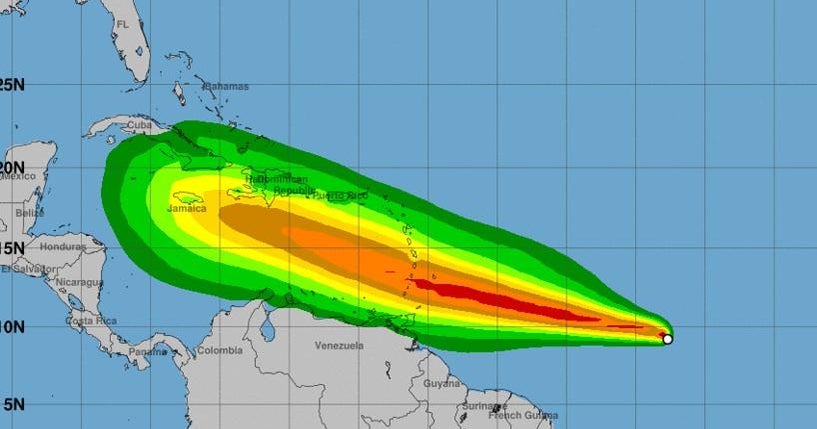Beryl, the second tropical storm of the Atlantic hurricane season, took shape Friday as it barreled its way toward the Caribbean.
Beryl was expected to strengthen into a hurricane as it approached the Windward Islands in the West Indies, the National Hurricane Center reported in its latest advisory late Friday night.
Beryl was centered about 1,110 miles southeast of Barbados, the hurricane center said, with maximum sustained winds of 40 miles per hour and tropical storm-force winds extending 45 miles from its center. It was moving west at 18 mph.
The system was expected to hit the Windward Islands by late Sunday or Monday, and was forecast to bring anything from 3 to 6 inches of rain to the Windward Islands and Barbados. No watches or warnings were yet in place.
NOAA
Last week, Tropical Storm Alberto brought torrential flooding to portions of southern Texas and northeastern Mexico. It was responsible for at least four deaths in the Mexican states of Nuevo Leon and Veracruz, according to the Associated Press.
The Atlantic hurricane season began June 1 and lasts through Nov. 30. According to the hurricane center, the season’s first hurricane usually forms in early to mid-August, which would make Beryl unusual if it were to reach hurricane strength. In a report released last month, the NOAA predicted an “above average” hurricane season with 17 to 25 storms, 8 to 13 hurricanes and 4 to 7 major hurricanes of category 3 or higher.
A tropical storm is a tropical cyclone with maximum sustained winds of 39 to 73 mph, while a hurricane is defined as a tropical cyclone with maximum sustained winds greater than 74 mph.







